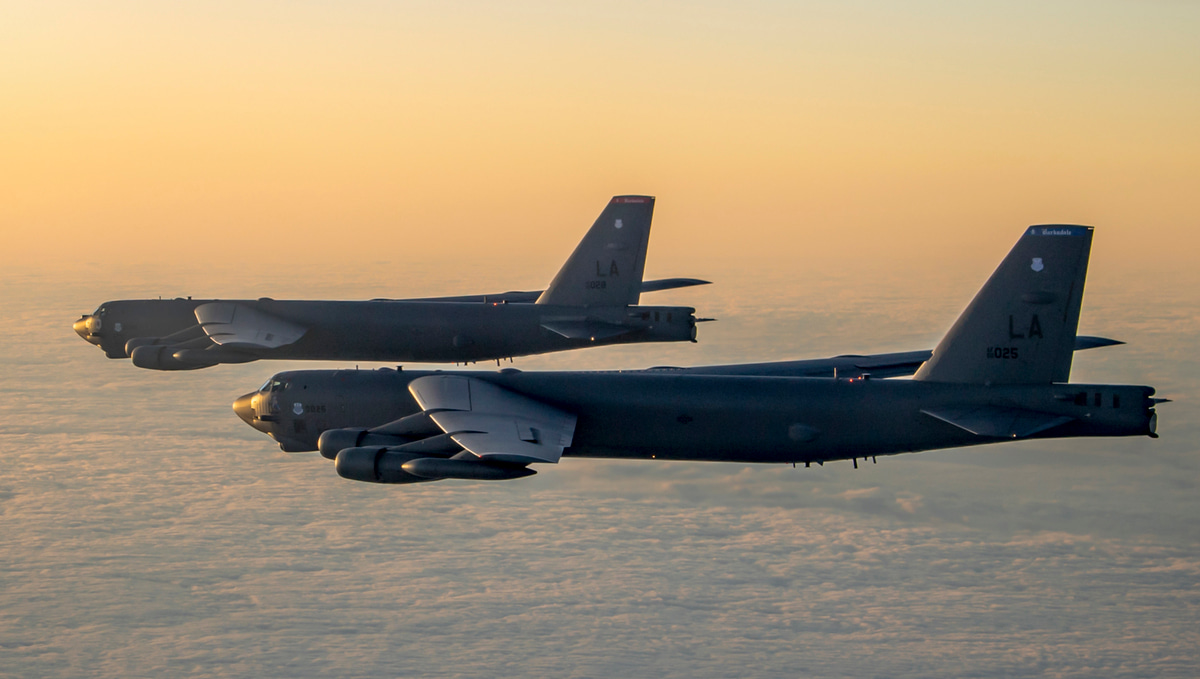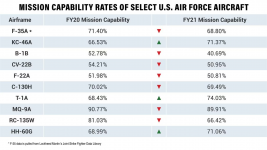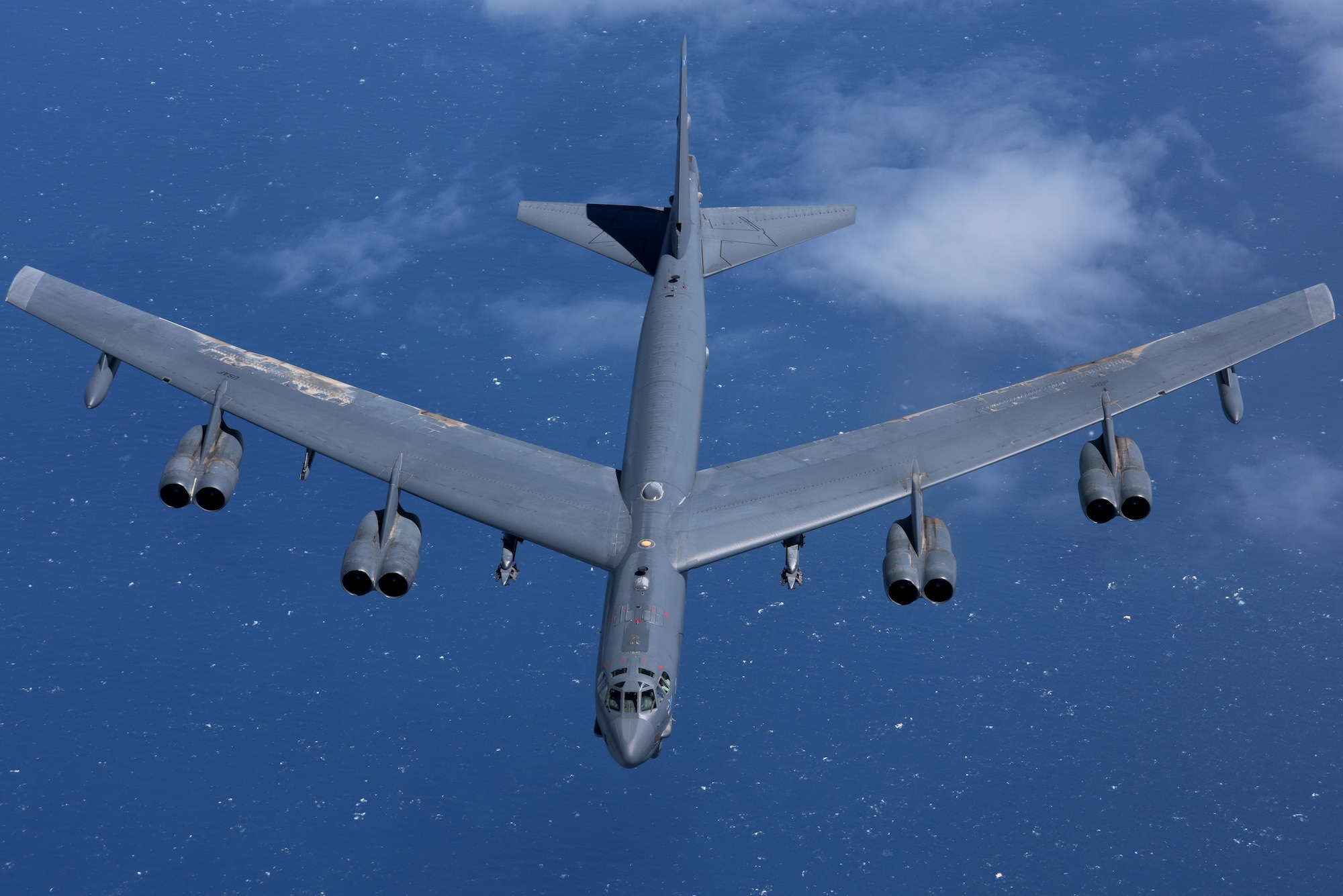
Rolls-Royce Selected for B-52 Re-engining Program | AIN
The long-running saga of re-engining the venerable B-52 bomber has now become reality with the award of a major new engine contract to Rolls-Royce.
Rolls-Royce Selected for B-52 Re-engining Program
by David Donald
- September 25, 2021, 4:55 AM

Replacing the B-52H’s eight TF33 turbofans with the F130 will give the strategic bomber at least another 30 years of life. (Photo: U.S. Air Force)
On September 24, the Department of the Air Force awarded a $2.6 billion contract to Rolls-Royce Corporation to provide new engines for the B-52 Commercial Engine Replacement Program (CERP). The company will build 608 F130 engines to re-engine 76 B-52Hs, as well as 42 spares, in its manufacturing facility in Indianapolis, Indiana. The contract also covers the provision of spares, support equipment, engineering data, and sustainment activities.
The CERP program is aiming to deliver the first two modified bombers by the end of 2025 for testing. By the end of 2028 the first operational batch is due to have been delivered, with the entire fleet to have been re-engined by 2035. Based on the commercial BR725 powerplant, the F130 engine will deliver significant increases in fuel efficiency and range, and major reductions in emissions from unburned hydrocarbons and maintenance costs.
“[CERP] is the most important and comprehensive upgrade to the B-52 in over half a century,” said Maj. Gen. Jason Armagost, director of Strategic Plans, Programs and Requirements at Air Force Global Strike Command. “The B-52 is the workhorse of the nation’s bomber force and this modification will allow it to continue its critical conventional and standoff mission into the 2050s.”
Early proposals to re-engine the B-52H had focused on the use of four large turbofans, but the required structural changes were considered too costly. As a result, the CERP aims to replace each aircraft’s eight 1960s-vintage Pratt & Whitney TF33-P-103 low-bypass ratio turbofans on a one-for-one basis. Installing the new engines is still a complex upgrade, requiring changes to the engine struts and nacelles, as well as on the flight deck. Digital prototyping is being employed to integrate the engines and associated changes in a virtual environment to establish the most cost-efficient and effective solution before making any physical modifications.
The F130 engine is a member of the Rolls-Royce BR700 family, which was developed in the 1990s by Rolls-Royce in a joint venture with BMW. In 2000, Rolls-Royce took over the program in its entirety, including the commercial engine factory at Dahlewitz in Germany. The first version, the BR710, was selected to power the Gulfstream V/G550 and Bombardier Global Express. As such, it is already in U.S. Air Force service with the C-37 and E-11 Battlefield Airborne Communications Node (BACN) aircraft. A considerably more powerful derivative, the BR715, powers the Boeing 717 airliner.
Benefitting from a decade of technological advances, the BR725 was certified in 2009 with a larger fan and many internal improvements. With a maximum thrust rating of 16,900 pounds, its initial application was the Gulfstream G650 business jet, now followed—in F130 military form—by the B-52H. Continued development of the BR725 has resulted in the Pearl family that powers the Global 5500/6500 and forthcoming Gulfstream G700 and Dassault Falcon 10X.





